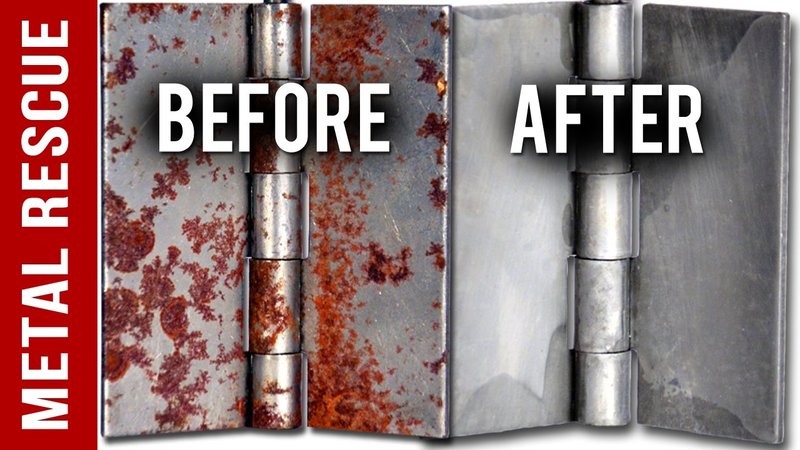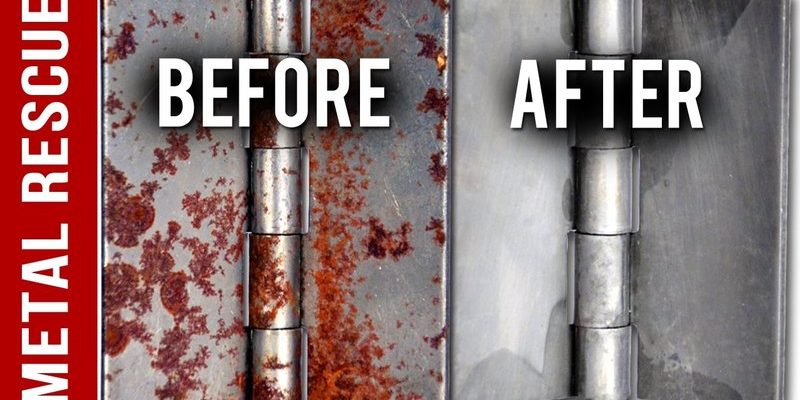
Here’s the thing: *troubleshooting a rusted exterior door hinge* is usually much simpler than people imagine, whether you have a basic steel hinge or a pricier brass one. Even name-brand hardware like Schlage or Kwikset isn’t immune. Think of a hinge like a bicycle chain—it works smoothly until weather, salt, or time gum up the works. Let me walk you through why rust happens, how to clean it up, and the best ways to prevent it in the first place.
What Causes Rust on Exterior Door Hinges?
Rust might seem like magic, but it’s just chemistry in action. Any metal with iron content—like most common door hinges—can start to rust when exposed to moisture and air. If your door faces rain, humidity, or even morning dew, that dampness seeps right into the hinge’s little crevices. Over time, the oxygen in the air and the water combine, and poof: you get iron oxide, or rust.
But honestly, it’s not all about the weather. Using the wrong cleaning products or not cleaning at all can speed up rusting too. For example, some folks think “more is better” and slather WD-40 everywhere. Short term? Yes, it might help. Long term? Some lubes actually attract dust, and that creates even more gunk. If you live near the ocean, salty air is another villain—salt is like a turbocharger for rust.
One little-known cause: painting over hinges. Lots of people do it when they’re repainting a door, figuring it’ll help protect them. The problem is, paint traps moisture underneath. Before you know it, the hinge is rusting unseen. So if you spot paint flakes or bubbles on your hinge, that could be a clue.
How to Identify a Rusted Hinge Before It Gets Worse
You might be wondering, “Can’t I just ignore a bit of rust?” Here’s why you shouldn’t. A little spot might just look cosmetic, but rust is sneaky. It eats away at the hinge from the inside, so by the time a door gets hard to open, you could be looking at real damage.
Look for these signs:
- Orange or brown spots around the hinge pin or on the leaf plates
- Stiffness or squeaking when opening and closing the door
- Flakes or powder coming off when you touch the hinge
- Loose hinge screws (rust can eat at threads and weaken the hold)
Even if the rest of your hardware is fine, one bad hinge can drag down the whole door. Give your hinges a quick once-over every few months—trust me, a little vigilance here can save you a headache later.
Cleaning a Rusted Exterior Door Hinge: Step-by-Step
Let’s get practical. Cleaning a rusty hinge is a classic troubleshooting project you can handle in an afternoon. Here’s exactly what you’ll need: a screwdriver, a bowl, steel wool or a stiff brush, white vinegar or lemon juice, and a dry cloth. (Optional but handy: a light oil or silicone spray for after.)
Step-by-step cleaning:
- Remove the hinge: Prop the door safely, then unscrew the rusty hinge. Don’t force anything—if the screws are stubborn, tap gently with a screwdriver handle.
- Soak in vinegar: Place the hinge in a bowl of vinegar or lemon juice. This breaks down surface rust naturally. Let it sit for 30 minutes to 2 hours, depending on how bad the rust is.
- Scrub thoroughly: Use steel wool or a stiff brush to scrub the rust away. Pay extra attention to corners and the hinge pin.
- Rinse and dry: Rinse the hinge thoroughly, then dry right away—leaving it wet is just inviting more rust!
- Lubricate and reinstall: Before putting the hinge back, add a tiny drop of silicone-based lubricant to the pin and moving parts. This keeps it gliding smoothly for months.
The sooner you tackle rust, the easier it is to remove. Don’t wait until your hinge looks like a science experiment gone wrong!
If the rust has chewed big holes or the hinge feels flimsy, it’s safer (and smarter) to swap it out for a new one. No troubleshooting can bring back metal that’s already crumbling.
Preventing Rust on Door Hinges: What Actually Works?
Cleaning is great, but let’s be real—you want this to be a once-in-a-blue-moon task, not an annual headache. The best way to avoid rust is by keeping moisture out and stopping rust before it starts.
Here’s what works:
- Regular cleaning: Wipe down hinges with a dry cloth every couple of months. It sounds basic, but it works.
- Lubricate lightly: Once or twice a year, add a drop or two of silicone lubricant (never a heavy, sticky oil). This shields the metal and keeps things moving.
- Don’t paint over hinges: If you’re repainting a door, unscrew and remove the hinge first. Let it breathe.
- Inspect your weatherstripping: Water sneaks in through broken seals. Make sure your door’s seals are snug and intact.
- Upgrade to rust-resistant hinges: If your climate is super humid, spring for stainless steel or brass hinges. They cost a bit more, but the hassle you’ll save is worth it.
Honestly, prevention is five minutes of work for peace of mind that lasts years.
When Should You Replace a Rusted Door Hinge?
Sometimes even the best troubleshooting can’t save a hinge. Heavy rust can eat right through hinge plates or the pin, making the door unsafe. If you spot any of these warning signs, it’s time to swap out the hinge instead of cleaning it:
- Noticeable bending or warping—the hinge doesn’t sit flat even after cleaning
- Deep pitting or holes in the metal itself
- Broken or stripped screw holes that won’t hold the hinge in place
- Wobbling door that no amount of tightening can fix
You might be tempted to “patch” things up, maybe by adding washers or extra screws. But with security hardware—especially on exterior doors—shortcuts can backfire. Honestly, a new hinge from the same brand (Schlage, Kwikset, or even a generic universal model) is pretty cheap, and installation is usually just a matter of unscrewing the old and screwing in the new.
Comparing Hinge Materials: Which Rust Less?
Let me explain the biggest factor in rust: the hinge’s material. Most standard doors use steel hinges, which rust fairly easily, especially if they’re uncoated. Brass is more resistant but can tarnish (which looks different than rust). Stainless steel, meanwhile, is the gold standard—hardly ever rusts, even in rainy climates.
Here’s a quick comparison:
| Material | Rust Resistance | Typical Cost | Common Uses |
| Steel (plain) | Low | Low | Budget homes, interiors |
| Steel (plated) | Medium | Low-Mid | Exterior doors, some brands |
| Brass | High | Mid-High | Decorative doors, vintage homes |
| Stainless Steel | Very High | Mid-High | Coastal, modern homes |
If you’re troubleshooting constant rust, switching up your hinge material might solve the problem for good.
Extra Tips for Troubleshooting Door Hinges in Coastal or Humid Climates
Living near water or in a steamy climate means you’re fighting rust on “hard mode.” Here’s how to keep up:
- Check hinges more often—every 2–3 months instead of yearly
- Consider weatherproof hinge covers for exposed doors
- Keep nearby surfaces dry (no wet leaves or pooling water at the threshold)
- Use a dehumidifier inside if your entryway sweats during rainy seasons
Even premium brands can rust faster in salty air. Swapping to stainless steel hinges and keeping them wiped down is honestly your best bet if “rust troubleshooting” is a never-ending quest at your place.
Final Thoughts: Keep Your Door (and Hinge) Healthy
Rusted exterior door hinges are a classic home headache, but they don’t have to be a crisis. The trick is to catch rust early, clean it off gently, and protect the hinge from moisture before it gets a foothold. Whether you’re troubleshooting a Schlage, Kwikset, or a no-name hinge, the steps are almost always the same. Take the hinge off, soak and scrub away the rust, dry thoroughly, then reinstall with a bit of lubricant.
In the end, a squeak-free, smooth-swinging door just feels better—no haunted house vibes, no wrestling matches on the porch. Take a few extra minutes now and then to check your hinges, and you’ll save yourself a lot of future hassle… and maybe even your favorite mug from a near-miss as you fumble through a stuck door.
